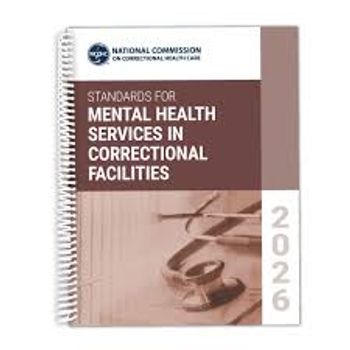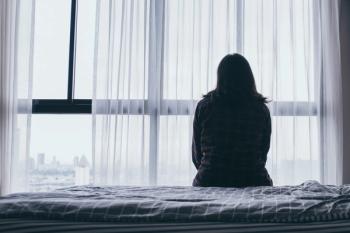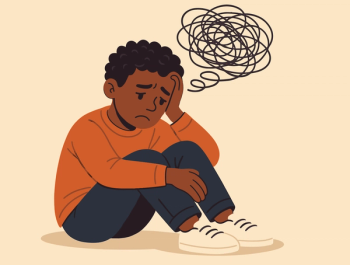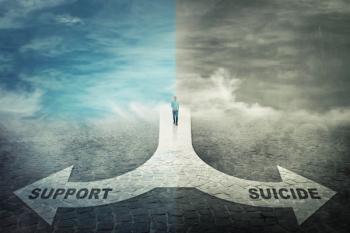
- Psychiatric Times Vol 12 No 4
- Volume 12
- Issue 4
Assisted Suicide and Euthanasia: Oregon Tries the Dutch Way
Late last year, Oregon voters approved a law that would permit doctors to prescribe lethal drugs to patients judged to be in the last six months of life. Oregonians are setting out on a path that the Dutch have traveled for the past 20 years.
Late last year, Oregon voters approved a law thatwould permit doctors to prescribe lethal drugs to patients judgedto be in the last six months of life. Oregonians are setting outon a path that the Dutch have traveled for the past 20 years.
The Oregon law, now under a preliminary injunction pending a determinationof its constitutionality, is the latest result of our failureto develop a better response to the needs of the terminally ill.Fear of dying in unbearable pain or of being kept alive in intolerablecircumstances leads a frustrated public to action that only compoundsthe problem.
It is impossible to predict with certainty that a patient hasonly six months to live, which makes mistaken or falsified predictionsinevitable. The Oregon law, like law in the Netherlands, permitsassisted suicide when patients are neither in physical pain norimminently about to die, and will encourage people who fear deathto take a quicker way out.
A few years ago, a young professional in his early 30s who hadacute myelocytic leukemia was referredto me for consultation. With medical treatment, Tim was givena 25 percent chance of survival; without it, he was told, he woulddie in a few months.
His immediate reaction was a desperate preoccupation with suicideand a request for support in carrying it out. He was worried aboutbecoming dependent and feared both the symptoms of his diseaseand the side effects of treatment. His anxieties about the painfulcircumstances that would surround his death were not irrational,but all his fears about dying amplified them.
Many patients and physicians displace anxieties about death ontothe circumstances of dying-pain, dependence, loss of dignity,the unpleasant side effects resulting from medical treatments.Focusing on or becoming enraged at the process distracts fromthe fear of death itself.
Once Tim and I could talk about the possibility or likelihoodof his dying-what separation from his family and the destructionof his body meant to him-his desperation subsided. He acceptedmedical treatment and used the remaining months of his life tobecome closer to his wife and parents. Two days before he died,Tim talked about what he would have missed without the opportunityfor a loving parting (Hendin 1994a).
Under Oregon law, he probably would have asked a doctor's helpin taking his own life. Because he was mentally competent anddid not meet the clinical criteria for a diagnosis of depression,he would have qualified for assisted suicide and would surelyhave found a doctor who would agree to his request.
Since the Oregon law, which uses guidelines like those in effectin the Netherlands that do not require an independently referreddoctor for a second opinion, Tim would have been referred by aphysician supportive of assisted suicide to a colleague who wasequally supportive. The evaluation would very likely have beenpro forma. He could have been put to death in an unrecognizedstate of terror, unable to give himself the chance of gettingwell or of dying in the dignified way he did (Hendin 1994b).
Although the Oregon law requires counseling if the patient's doctordetermines that he or she has a mental disorder or has his orher judgment impaired by depression, studies indicate that mostdoctors are not qualified to make such a determination (Conwelland Caine 1991). Nor should psychiatrists and psychologists besanguine at being reduced to the role, advocated in most legalizationproposals, of simply determining if a patient is competent tomake a decision regarding euthanasia. It wasthe fact that I was not the arbiter of this case that permittedthe patient I described with acute myelocytic leukemia to talkfreely about his fears of death and eventually to change his mindabout wanting assisted suicide.
In the Netherlands, where there is legal sanctionfor assisted suicide and euthanasia, instances of inappropriatelyhastening death are common. Even in a film intended to promoteeuthanasia, Appointmentwith Death (K.A. Productions, 1993), that I was shown at the DutchVoluntary Euthanasia Society, I saw an example. A young man, seeminglyin his mid-30s, was diagnosed as HIV-positive. He had no physicalsymptoms, but had seen others suffer with them and wanted hisphysician's assistance in dying. The doctor compassionately explainedto him that he might live for some years symptom-free. Over timethe young man repeated his request for euthanasia and eventuallyhis doctor acceded to it. The young man was clearly depressedand overwhelmed by the news of his situation. The doctor keptestablishing that the young man was persistent in his request,but did not address the terror that underlay it. I was convincedthat with a psychologically sensitive physician looking for morethan repeated requests to die, more likely in a culture not somedically accepting of euthanasia, this young man would not haveneeded to be put to death.
Suicide in the Netherlands
The Dutch experience illustrates how social sanctions promotea culture that transforms suicide into assisted suicide and euthanasiaand encourages patients and doctors to see assisted suicide andeuthanasia-intended as an unfortunate necessity in exceptionalcases-as almost a routine way of dealing with serious or terminalillness and more recently even with grief.
The Dutch like to point out that they have a relatively low suiciderate and that since the acceptance of euthanasia that rate hasnot increased, but dropped. But many of the cases of euthanasiaare likely to be people who would have ended their own lives ifeuthanasia were not available to them. This was certainly oneof the justifications given by Dutch doctors for providing suchhelp. If any significant percentage of the euthanasia cases wereto be included among the suicides, the Dutch figure would riseconsiderably.
In fact, the figures suggest that the drop in the Dutch suiciderate from a peak of 16.6 in 1983 to 12.8 in 1992 (in absolutenumbers from 1,886 to 1,587) may well be due to the availabilityof euthanasia. More significant than the drop is the fact thatit has taken place in the older age groups. In the 50 to 59 agegroup, the rate dropped from a peak of 21.5 in 1984 to 14 in 1992.Among those age 60 to 69 the rate dropped from a peak of 23.2in 1982 to 14.5 in 1992. Among those age 70 and older the ratedropped from a peak of 31.3 in 1983 to 19.9 in 1992. These areremarkable drops of about 33 percent in these three groups. Ofthe 1,886 suicides in 1983, 940 were in the three older age groups.Of the 1,587 suicides in 1992, 672 were in the three older agegroups. The drop of 268 suicides in the three older age groupswas primarily responsible for the drop in the Dutch suicide rate.Comparing the five years of 1980 to 1984 with the 1988 to 1992years provides statistically significant evidence of a drop inthe older age groups that is not due to chance. These are theage groups containing the highest numbers of euthanasia cases(86 percent of the men and 76 percent of the women) and the greatestnumber of suicides.
The period of the last decade is the period of growing Dutch acceptanceof euthanasia. It seems plausible that the remarkable drop inthe older age groups is due to the fact that older suicidal patientsare now asking to receive euthanasia.Among an older population,physical illness of all types is common, and many who have troublecoping with physical illness become suicidal. In a culture acceptingof euthanasia, their distress may be accepted as a legitimatereason for euthanasia. It may be more than metaphorical to describeeuthanasia as the Dutch cure for suicide.
How Dutch policy translates into practice with a psychiatric patientis evident in a case that has received international attentionand has established assisted suicide for psychiatric patientsas acceptable practice in the Netherlands. Psychiatrist BoudewijnChabot assisted in the suicide of a physically healthy but grief-stricken50-year-old social worker who was mourning the death of her sontwo months earlier (Hendin 1994b).
Chabot had accepted his patient, to whom he gave the fictionalname of Netty Boomsma (Chabot 1993), intotreatment in the summer of 1991 with the understanding, commonin the Netherlands, that if she did not change her mind aboutnot wanting to live, he would assist in her suicide. Netty appearsto have used the agreement to mark time until Chabot felt obligedto fulfill his promise. He assisted in her suicide a little overtwo months after she came to see him, about four months afterher younger son died of cancer at 20. Her first son had killedhimself some years earlier following a rejection by his girlfriend.Netty had felt he might not have done so had she divorced herhusband earlier and ended an unhappy family life.
Chabot described the case in a written account he sent a numberof colleagues to satisfy the requirement for consultation. Althoughtwo did not think he should go forward and felt bereavement therapywas indicated, an expert in bereavement therapy thought it wasfutile and the majority agreed that Chabot should proceed. Nonefelt it was necessary to actually see the patient.
Chabot described to me the scene the night he assisted in Netty'sdeath. He went with a colleague to Netty's home and Netty hada friend with her. She said she wanted to go ahead. She askedto go to the room of her younger son. Chabot gave her a liquidas well as some capsules that a pharmacist had prepared for him.She opened the capsules as she had been advised and put them insome yogurt. Jokingly she asked him if he could not have givenher some capsules before to practice. She sat down on the bedand asked them to turn on the record player which played a Bachflute sonata that had been played at her son's funeral. She tookthe glass and drank the liquid, saying that it was not too bad.While the music was playing Netty kissed a photograph of her twosons that was next to the bed. She asked her friend to sit nextto her. Her friend stroked her hair. Netty said she had made agreat effort to fix her hair and her friend was messing it up.The friend replied she would make it beautiful later. To Chabot,Netty said, "Why do young kids want suicide?" thinkingof her son.
Chabot recalled saying to her after five minutes, "Thinkof your boys." In seven minutes she lost consciousness whilebeing held by her friend. Then she slept. Her heart stopped inone-half hour.
Chabot insisted that Netty was not depressed, was not a patient,but simply a grieving woman who wanted to die. Netty had not exhibitedthe sad affect associated with depression; patients obsessivelybent on suicide often do not. In the loss of pleasure that Nettyexperienced in activities she previously enjoyed, Netty surelymet that aspect of the criteria established for the diagnosisof depression. In the sense, however, that any therapy would haverequired challenging the premises under which she came, and wouldprobably have also included some trial on medication, no therapycould be said to have been undertaken with Netty so one can understandwhy Chabot does not regard her as a patient.
Chabot stated that if he did not agree to her terms she wouldhave never come back. She had also threatened to take mattersinto her own hands. I asked why if she did not follow his prescriptionfor treatment, he would feel obliged to follow hers. Certainlyat the end he seemed to be succumbing to blackmail.
Chabot and a number of other Dutch therapists believe there isan obligation to assist in the suicide of a suicidal patient iftreatment has not succeeded. They point to cases that they hadbeen able to involve in psychotherapy because of the promise thatif treatment did not work they would assist in their patients'suicides. Most therapists, however, find that such patients canbe involved in therapy without such a promise by making it clearthat they accept suicidal feelings as part of the therapy, arenot uncomfortable or frightened by them, and will not go to anylengths to stop the patient's suicide, conveying that ultimatelythe patient is responsible for being alive.
Many suicidal patients come into therapy with sometimes conscious,but often unconscious, fantasies that cast the therapist in therole of their executioner. Netty seemed to be such a patient;she and Chabot also experienced a closeness in her death. A commitmenton the therapist's part to become executioner if treatment failsplays into and reinforces these fantasies. It may also play intothe therapist's illusion that if he or she cannot cure the patientno one else can either.
Some therapists also seem to have entered into the patient's fantasyof death as a reunion. Chabot's comment to Netty right beforeher death that she should think about her boys suggests that hetoo saw her death metaphorically as a return to her lost children.By metaphorizing death as something other than death, it is madeto appear an attractive option. Not treating Netty as a patientbut as a devoted mother whose desire to join her boys in deathwas not a sign of her disturbance but a legitimate and realizablegoal makes it impossible to explore her guilt toward her childrenand her need for punishment.
From what Chabot was able to elicit in sessions with Netty, bereavementcounseling was likely to fail with her, but psychotherapy lessnarrowly focused might have succeeded. Netty's personality problemsfar anteceded her bereavement. She said she became a person onlywhen her first son was born and stayed alive only for the sakeof her second son. Netty's guilt over her first son's suicidehad sources that were deeper than her failure to have gotten adivorce. Caring for her second son seems to have had somethingof the quality of an atonement. One suspects that if therapy providedher with the opportunity to understand her relationship to hersons before deciding to join them in death, it might have engagedher.
No one should underestimate the grief of a mother who has losta beloved child, but neither should one ignore the many ways lifeoffers to deal with the feelings of loss, guilt and pain a child'sdeath is likely to arouse. Certainly a decision to end life sosoon after the death of her second son should not have been assistedor implemented. With or without treatment, time alone might wellhave made a difference.
The Dutch Supreme Court, which ruledon the case in June 1994, agreed with the lower courts in affirmingthat mental suffering can be grounds for euthanasia, but foundChabot guilty of not having had a psychiatric consultant actuallysee the patient. Although the court expressed the belief thata consultant's direct contact with a patient was particularlynecessary in the absence of physical illness, it imposed no punishmentsince it felt that in all other regards Chabot had behaved responsibly.The case was seen as a triumph by euthanasia advocates, sinceit legally established mental suffering as a basis for euthanasia.Since the consultation can easily be obtained from a sympatheticcolleague, it offers the patient little protection.
The acceptance of euthanasia for psychiatric patients who aresuicidal seems the inevitable consequence of allowing such criteriaas "competence" and "intolerable suffering"to determine the outcome rather than sound clinical judgment.The psychiatrist in some of the psychiatric cases is in the positionof working to prevent suicide until the patient asks for his orher assistance in committing suicide and then the rules of thegame change and the psychiatrist negotiates with the patient asto whose approach is best.
Seriously suicidal patients want suicide. In a society that makeseuthanasia accessible for them they will be harder to treat, noteasier. Many of them fantasize closeness in death with a personwho kills them. When psychiatrists and general practitioners havecomplementary fantasies, euthanasia fulfills their needs as muchas the patient's.
Dutch practice ignores what we know of the complex dynamics ofthe relation between the treatment of the suicidal and the desireof some who are seriously ill to end their lives. Suicidal patientsare prone to make conditions of life that life cannot fulfill:"I won't live if I can't be in control," "withoutmy husband," "if I lose my looks, power, prestige orhealth," or "if I am going to die soon." Depression,often precipitated by discovering a serious illness, exaggeratesthe tendency toward seeing problems in black-or-white terms (Hendinand Klerman 1993).
Although clinical and research experience confirm that the overwhelmingmajority of suicidal patients including the terminally ill sufferfrom a depression that can be treated, when a patient finds adoctor who shares the view that life is only worth living if certainconditions are met, the patient's rigidity is reinforced (Hendin1995).
Many of us have known situations in which a doctor would haveacted humanely by helping a terminally ill person die in the finalweeks of illness. My observations in the Netherlands persuademe that legalization of assisted suicide and euthanasia are notthe answer to the problems of the seriously or terminally ill.
The Netherlands has moved from assisted suicide to euthanasia,from euthanasia for the terminally ill to euthanasia for the chronicallyill, from euthanasia for physical illness to euthanasia for psychologicaldistress and from voluntary euthanasia to involuntary euthanasia(called "termination of the patient without explicit request").The rationale for such extensions has been that to deny the rightto die with assistance to the chronically ill who will have longerto suffer than the terminally ill or those who experience psychologicalpain not associated with physical disease is a form of discrimination.Euthanasia is preferred by patients and doctors as a safer andmore certain way of assuring death so that assisted suicide isnow used relatively infrequently.
Ending patients' lives without their request has been justifiedas necessitated by the need to make decisions for patients notcompetent to choose for themselves. The Dutch Government's owncommissioned research has documented abuses of the system. Inmore than 1,000 cases a year, doctors actively caused or hasteneddeath without the patient's request. In more than 5,000 casesdoctors made decisions that might have ended or were intendedto end the lives of competent patients without discussing thedecisions with them (van der Maas, van Delders and Pijnenborg1992).
Some euthanasia advocates defend the need for doctors to makedecisions to end the lives of competent patients without discussionwith them. One Dutch euthanasia advocate gave me as an examplea case where a doctor had terminated the life of a nun a few daysbefore she would have died because she was in excruciating pain,but her religious convictions did not permit her to ask for death.He did not argue, however, when asked why she should not havebeen permitted to die in the way she wanted.
Other advocates admit that a system in which doctors become usedto playing a predominant role in making decisions about endinglife encourages some to feel entitled to make decisions withoutconsulting patients. Many of the professionals who are advocatesof euthanasia conceded that abuses were common. In their publishedarticles, however, they do not admit this since they see the issueof euthanasia as political.
Neither legalization of euthanasia nor opposition to it addressesthe larger problem of how to care for the terminally ill. Thecall for legalization is a symptom of our failure to respond tothe needs of the terminally ill and their understandable fearof artificial prolongation of the process of dying.
Yet the dangers threatened by legalization of assisted suicideare being avoided elsewhere in Western Europe where there is nogreat demand for legalizing assisted suicide or euthanasia. Carefor the terminally ill is better in the Scandinaviancountries than in the United States and in the Netherlands. Scandinaviandoctors do not accept excessive measures for prolonging life inpeople who are virtually dead, but neither do they encourage peopleto choose death prematurely.
In the United States as in the Netherlands doctors are not sufficientlytrained in the relief of pain and other symptoms in the terminallyill. Hospice care is in its infancy in both countries. We havenot yet educated the public as to the choices they have in refusingor terminating treatment that prolongs a painful process of dying.And we have not devoted enough time in our medical schools toeducating future physicians about coming to terms with the painfultruth that there will be patients they will not be able to savebut whose needs they must learn to address.
Psychiatrists and psychologists in the Netherlands played a relativelypassive role in the growing normalization of suicide and euthanasiaeven though this has meant that patients who are basically suicidal,whether physically ill or not, are being assisted in death likethose who seek relief in the last days of a terminal illness.We should learn from that experience to be more involved, educatingthe public that legalization may become a license to abuse andexploit the fears of the ill and depressed. Legalization constitutesacceptance of the view of those who are engulfed in suicidal despairthat death is the preferred solution to the problems of illness,age and depression. It encourages the worst tendencies of depressedpatients, most of whom can be helped to overcome their condition."Normalizing" suicide as a medical option inevitablylays the groundwork for a culture that will not only turn euthanasiainto a "cure" for depression but may prove to exerta coercion to die on patients when they are most vulnerable.
Dr. Hendin is executive director of the American Suicide Foundation,New York, N.Y.
References:
References
1. Chabot BE. Zelf Beschikt. Amsterdam: Uitgeverijbalans; 1993.
2. Conwell Y, Caine ED. Rational suicide and the right to die:reality and myth. N Engl J Med. 1991;15:1100-1103.
3. Hendin H. Scared to death of dying. The New York Times. 1994b;Dec.16, 1994.
4. Hendin H. Seduced by death: patients and the Dutch Cure. Issuesin Law and Medicine. 1993a;10,1-45.
5. Hendin H. Suicide in America. New York: W.W. Norton; 1995.
6. Hendin H, Klerman G. Physician-assisted suicide: the dangersof legalization. Am J Psychiatry. 1993;150,143-145.
7. K.A. Productions. An Appointment with Death. 1993.
8. van der Maas PJ, van Delders JJM, Pijnenborg. Euthanasia andOther Medical Decisions Concerning the End of Life. Health PolicyMonograph. New York: Elsevier; 1992.
Newsletter
Receive trusted psychiatric news, expert analysis, and clinical insights — subscribe today to support your practice and your patients.













